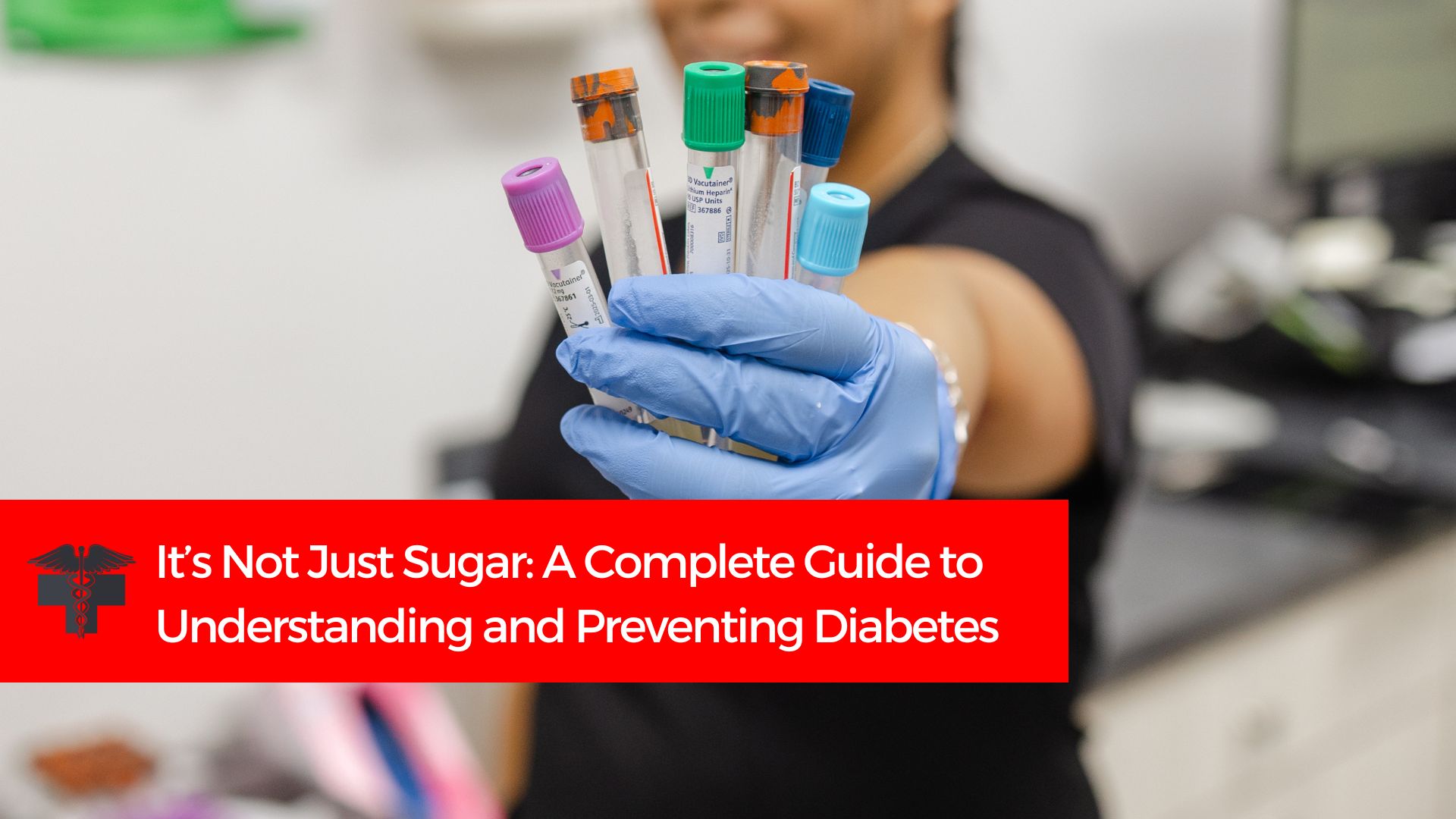Most people think diabetes is all about sugar.
The truth is much bigger: diabetes is about how your body uses energy and how well your cells respond to insulin, the hormone that moves glucose from your bloodstream into your cells.
When blood sugar stays high for too long, it slowly wears on your heart, kidneys, eyes, and nerves. The encouraging part is that most cases of type 2 diabetes can be prevented or delayed with simple, steady lifestyle changes. Not perfection. Just consistent habits.
This is your guide to taking control of your blood sugar starting today.
What Is Diabetes Really About?
Diabetes develops when your body cannot regulate glucose effectively. With type 2 diabetes, which is the most common type, this usually happens because of one of two reasons.
Your cells stop responding well to insulin, or your body no longer makes enough insulin to keep blood sugar stable.
Type 2 diabetes typically develops over years, which means you have time to make changes that matter.
Why Prevention Matters
High blood sugar does not just affect your energy level. Over time, it affects your organs. Chronic high glucose can stress the heart and blood vessels, damage the filtering system of the kidneys, impact the small vessels in the eyes, and affect nerve health, causing tingling or numbness in the hands and feet.
Preventing diabetes helps protect your whole-body health today and for decades to come.
Evidence-Based Habits That Help
1. Move More
Physical activity is one of the strongest tools for preventing type 2 diabetes. Aim to move your body daily. Many clinicians recommend a short walk after meals, which can help your muscles use glucose more effectively. Activity improves insulin sensitivity and helps lower blood sugar.
2. Eat Smart
Food is fuel, and it plays a major role in blood sugar control. Build meals with lean proteins such as chicken, fish, eggs, or Greek yogurt, fiber-rich foods like beans, oats, apples, and vegetables, healthy fats such as avocado, nuts, and olive oil, and plenty of colorful vegetables. Good sources of protein, fiber, and healthy fats slow digestion and help keep blood sugar steadier.
3. Hydrate Throughout the Day
Water matters even if it is not a magic fix. Drink water regularly throughout the day. Staying hydrated supports overall metabolism and prevents dehydration, which can affect blood sugar levels. Keep a water bottle nearby at home, work, or on the go.
4. Prioritize Restful Sleep
Sleep plays a major role in metabolism and blood sugar regulation. Create a nighttime routine by dimming lights, limiting screens before bed, and keeping a consistent bedtime. Poor sleep can make your body more resistant to insulin the very next day. Aim for seven to nine hours each night.
5. Know Your Numbers
Lab work gives you a clear picture of your metabolic health. Ask your provider to check your A1C, fasting glucose, and insulin levels. Early detection allows early action, and lifestyle changes are most effective before major symptoms appear.
When Should You Get Checked?
These symptoms do not automatically mean diabetes, but they can signal that it is time for lab work.
- Afternoon crashes
- Feeling tired after eating
- Cravings that will not stop
- Increased thirst
- Feeling exhausted even after sleeping
- Unexplained weight changes
Symptoms can overlap with many conditions. That is exactly why testing matters.
Take the First Step Today
Getting your blood sugar tested is quick, simple, and potentially life changing.
You are not powerless. You are informed, equipped, and capable.





 and then
and then